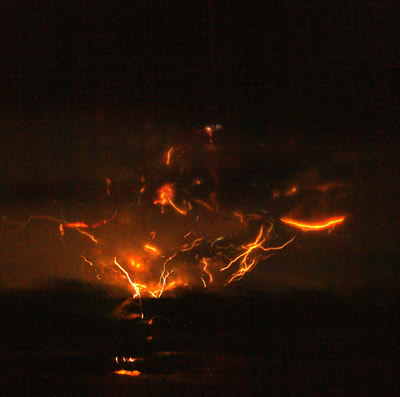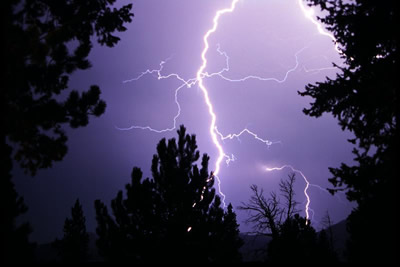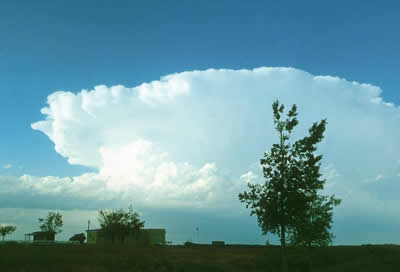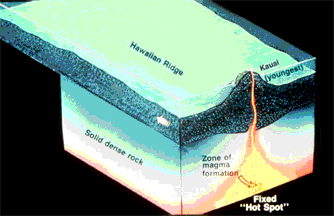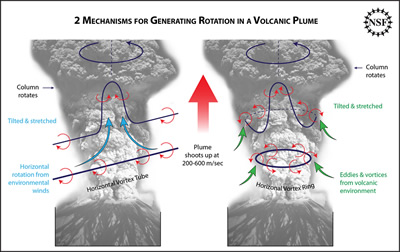Click on image for full size
Image Courtesy of Bretwood Higman
Scientists Learn About Lightning Inside a Volcanic Plume
News story originally written on April 7, 2009
This spring, scientists began recording data on lightning in a volcanic eruption right from the start of the eruption. They used an instrument called a Lightning Mapping Array to study electrical activity during a volcanic eruption. The Lightning Mapping Array records thousands of sections of a siongle lightning stroke. Scientists can use this information to learn how lightning is started and how it spreads through a thunderstorm, or in a volcanic plume.
When Alaska's Redoubt Volcano started rumbling in January, a team of researchers set up a series of the arrays near the volcano. When the volcano erupted on March 22 and 23, 2009, the arrays collected information about the lightning produced in the volcanic plumes.
"The data will allow us to better understand the electrical charge structure inside a volcanic plume," said scientist Ron Thomas of New Mexico Tech. "That should help us learn how the plume is becoming electrified, and how it evolves over time."
Redoubt was "a perfect laboratory," said physicist Paul Krehbiel of New Mexico Tech. "It erupted on schedule--and gave us two months' notice." Because of this advance notice, scientists were able to set up the sensors before the eruptions, and because of this scientists are going to be able to learn a lot about electrical charges and lightning in volcanic plumes.


